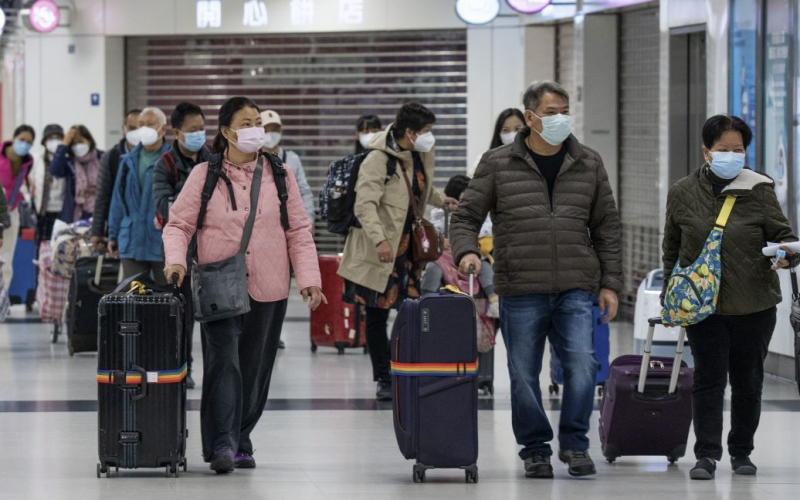
An outbreak of mycoplasma pneumonia among children is being recorded in China. Patients do not have a cough or characteristic symptoms of this disease.
Cases of respiratory illnesses, especially among children, have risen sharply in northern China , prompting discussions about the threat of a new pandemic four years after COVID-19 first emerged in the country.
The Independent reports this.
China has been rocked by a wave of mysterious respiratory illnesses among children, forcing world scientists to rush to find out the cause and determine whether the disease can spread further.
Chinese health authorities on November 13 said the rise in cases was a combination of already known viruses and was linked to the country's first full cold season since strict Covid restrictions were lifted last December and the circulation of known pathogens including influenza, mycoplasma pneumonia, respiratory syncytial virus (RSV) ) and SARS-CoV-2, the virus that causes COVID-19.
The World Health Organization and the International Society of Infectious Diseases have expressed concern and sent relevant inquiries to China.
“With the outbreak of pneumonia in China, children's hospitals in Beijing, Liaoning and other places were overwhelmed with sick children, and schools and classrooms were on the verge of suspending education,” the newspaper writes.
China's health ministry has asked local authorities to increase the number of fever clinics, but health authorities insist they have not detected “unusual or new illnesses” and say the wave of illnesses is due to the simultaneous circulation of several types of pathogens, the most common of which is influenza.
There is not yet enough data to come to a definitive verdict on the mysterious wave of the disease in China. Experts in the UK stressed that there is no evidence yet that the new virus is to blame.
Instead, it is most likely related to China's lifting of Covid restrictions in December last year, and may also be indirectly linked to the severe hepatitis epidemic that affected hundreds of children in Britain last year.
“I'm not going to hit the panic button on the pandemic based on what we know so far, but I will be very interested to see the WHO assessment after this,” said leading health expert Brian McCloskey.
Dr Zaniya Stamataki, a viral immunologist at the University of Birmingham, said there was “currently no evidence that the increase in cases of childhood pneumonia in China could be caused by the new virus.”
Chest X-rays of some patients showed pulmonary nodules, which are abnormal growths.
According to one of the professors, this usually indicates a bacterial rather than viral cause.
Pulmonary nodules may be seen in children with bacterial pneumonia, while secondary bacterial infections in those with the flu can also cause “spotty changes” on chest X-rays, he said, adding: “There may also be more than one infectious cause of current pneumonia.”
Many experts also highlighted the fact that China is entering its first winter since the lifting of years of lockdown measures last December, which Professor Ballou said “has likely sharply reduced the circulation of respiratory microbes and therefore reduced immunity to endemic microbes.”
“Other countries, including the UK, experienced large waves of respiratory infections and hospitalizations in children during the first winter after pandemic restrictions were lifted. Because China endured a much longer and more severe lockdown than almost any other country, it was assumed that there were waves of 'emergence from lockdown' could be significant in China. The current wave in China is likely caused by different respiratory pathogens such as RSV or influenza,” said Professor Ballou.
Professor David Heymann, from the London School of Hygiene and Tropical Medicine, agreed that seasonal infections were thought to be behind the wave of illness, but added that the challenge was to “recognize outbreaks and determine the cause.”
Let us remind you that the WHO commented on the situation in China.
Related topics:
More news

